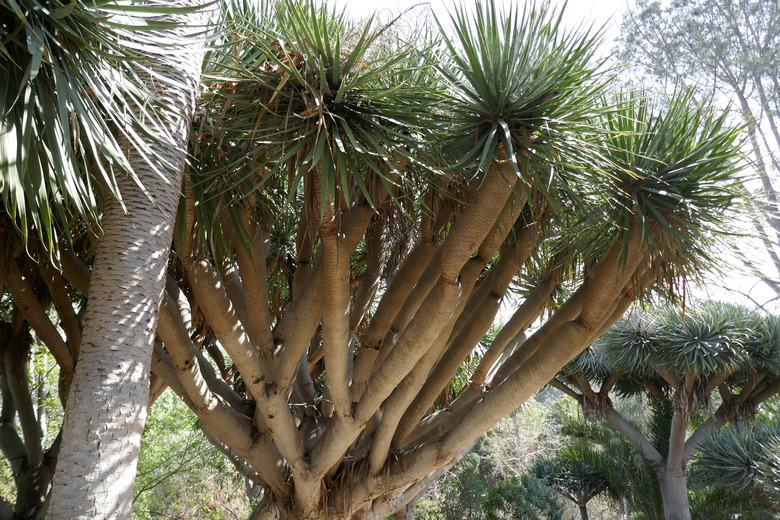How To Propagate A Madagascar Palm
Native to the tropical arid lands of southern Madagascar, the Madagascar palm (Pachypodium lamerei) isn't a palm at all, but a tree-like succulent in the dogbane family, Apocynaceae. Also called clubfoot, Madagascar palm grows with a swollen trunk lined in three-clustered spines and branches bearing a spiraling cluster of slender green leaves.
Fragrant white trumpet-shaped flowers bloom in summertime. It loses its leaves in the mild frosts or drought of winter. Outdoors in U.S. Department of Agriculture Hardiness Zones 9b through 11, madagascar palm grows to about 18 feet in height and 5 to 10 feet in width. It may be grown indoors in a warm, sunny room.
How to Propagate a Madagascar Palm
1. Look for Offsets
Look for small plant offsets at the base of the Madagascar palm's trunk
2. Prune Offsets From Trunk Base
Snap off or cut the plant offsets from the trunk base with pruning shears and rest the offset cuttings on a piece of newspaper. Sap bleeds from the offsets, but the newspaper will absorb it.
3. Air-Dry the Wounds
Air-dry the wounds on the cut offsets for four to eight days. High ambient humidity or cool temperatures prolong the time needed for the wounds to callous and dry completely.
4. Prepare a Pot
Fill a small pot with succulent/cactus potting soil mix, which contains lots of grit and drains freely.
5. Plant the Offsets
Insert a plant offset into the potting mix so that it remains upright and rests snugly.
6. Provide Water and Light
Lightly water the soil so that it is damp and place the pot in a warm window indoors that gets bright light but no direct sun, or outdoors in a location that's brightly lit.
7. Monitor Plant for Soil Moisture
Check on the young plant weekly, watering as needed to keep the soil damp. If temperatures rise above 85 degrees Fahrenheit, daily watering may be needed to keep soil barely damp. In cooler winter months, err on the side of underwatering so no stem root occurs in the moist soil and cooler temperatures.
Sow the Seeds
1. Collect Seed Pods
Collect brown, ripe seed pods (they look like small cucumbers) from the upper branches of the Madagascar palm in late summer to late fall. Allow the pods to air dry fully for one to four weeks to ensure they fully ripen, split open and reveal the many white-winged seeds. Discard any pods that blacken and succumb to any rot.
2. Soak the Seeds
Soak the seeds in warm water for 24 hours by placing them in a small cup. Use nonchlorinated water.
3. Prepare the Seed Tray
Fill a seed tray with coarse sand and place it in a warm, sunny location where temperatures hover between 70 and 80 F. Sown Madagascar palm seeds take three weeks to six months to germinate at 72 F. Place holes in the bottom of the seed tray to ensure proper drainage.
4. Sow the Seeds
Sow the pre-soaked Madagascar palm seeds in the moist sand in the tray, covering them with no more than 1/4 inch of damp sand. Seeds germinate in as little as three to four days. Sporadic germination of seeds continues for up to six months after sowing.
5. Keep the Soil Moist
Wet the seed tray's sandy soil as needed to keep the soil moist until the seeds germinate. Fill a spray bottle with room-temperature water and use it for precise application of water to the sand without disrupting the sand particles or overwatering.
